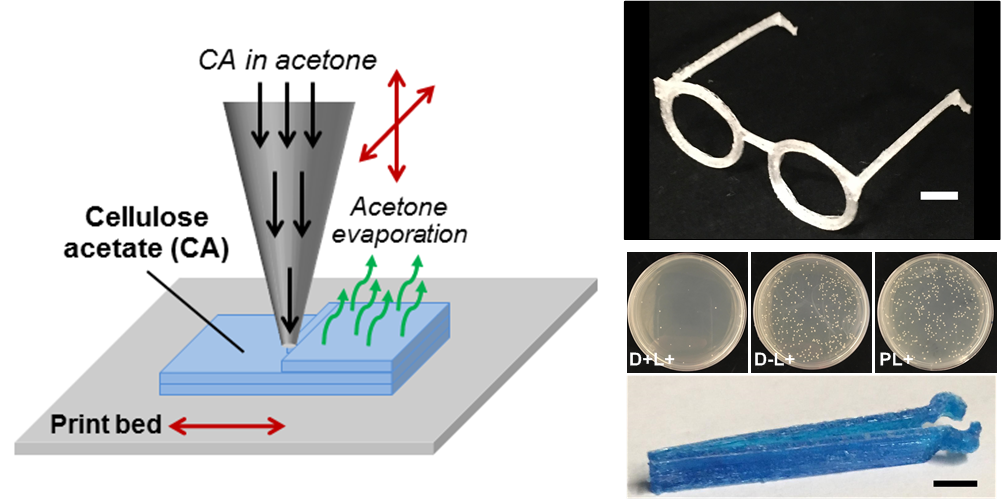
Despite cellulose being the most abundant organic polymer in the world and the basis of paper, its use in additive manufacturing has faced difficulties. However, two scientists at MIT have developed a new method that could provide a viable alternative to the polymers currently used in 3D printing materials, with potential applications in the many industries that use cellulosic materials and would benefit from the customization that additive manufacturing brings.
As extrusion-based 3D printers depend on heating polymer to make it flow, production speed is constrained by the amount of heat that can be delivered to the polymer without damaging it. While cellulose is biodegradable, biorenewable, biocompatible, mechanically robust and chemically very versatile, on heating it thermally decomposes before becoming flowable, partially due to hydrogen bonds between the cellulose molecules. This intermolecular bonding makes high-concentration cellulose solutions very viscous and therefore not easy to extrude.
As reported in the journal Advanced Materials Technologies [Pattinson, S. W., Hart, A. J. Adv. Mater. Tech. (2017) DOI: 10.1002/admt.201600084], to overcome this problem, the researchers A. John Hart and Sebastian Pattinson used cellulose acetate, which in bulk is as cheap as thermoplastics used for injection molding, and cheaper than the usual filament materials used for 3D printing. Cellulose acetate can be dissolved in acetone before being extruded – as the acetone evaporates quickly, the cellulose acetate solidifies in position, while another treatment replaces the acetate groups and increases the strength of the printed parts.
In a fully room-temperature process, after 3D printing, they restored the hydrogen bonding network through a sodium hydroxide treatment. They also added more functionality to the parts through the addition of antimicrobial dye – which kills 95% of bacteria upon exposure to light – to the printing ink to 3D print surgical tweezers with antimicrobial functionality.
As the team point out, “Our method enables the printing of high-density pure cellulosic parts with isotropic strength and high toughness that is superior to commonly used polymers in additive manufacturing”. A production system could also look to recover the evaporated acetone to make the process more cost-effective and environmentally friendly. Such versatility could find a range of uses such as in remote medical settings where it’s difficult to replace parts and maintain sterility.
They are now looking to develop the technique further to additively manufacture products such as eyeglass frames and medical devices, as well as investigate adapting it to print other materials with hydrogen bonding, such as silk and chitin.



